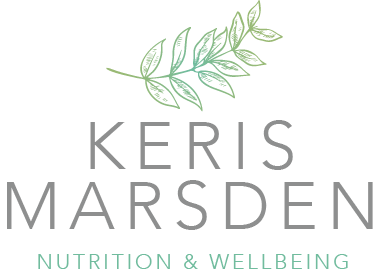Manfood: the best foods for men to eat
I decided to write this article for two reasons:
(i) Many of my male clients have mentioned feeling confused about the mixed messaging around nutrition, especially regarding red meat, butter and eggs.
(ii) Many of my female clients have mentioned their frustrations that the men in their lives seem to be able to eat what they like and get away with it (FYI there’s no getting away with it, it catches up with everyone at some point!)
Men’s health and nutrition: the problem
#1: mixed messaging about eggs and meat
Eggs and red meat were once vilified for heart disease and yet new research shows dietary cholesterol and saturated fat intake are not correlated with heart disease.
Both have have been exonerated and are back on the menu.
BUT as a result there’s been an increase in consumption of cereal, chocolate cereal (What the heck??), sandwiches, pasta and other refined carbs.
#2: weight complacency
Men generally tend to find maintaining a healthy weight and weight loss slightly more straight forward.
They lose weight quickly initially compared to women.
They also have more lean muscle which results in a higher metabolic rate.
High testosterone levels will also mean they’re naturally stronger and more athletic and able to burn more calories during exercise.
However, this can lead to more diet complacency than women or a greater focus on exercise and being able to ‘out train a bad diet.’
#3 lack of information
Men’s health stats show they are incredibly vulnerable to chronic diseases and health issues.
The sad facts 😞
Men have a 37% higher risk of dying from cancer than women
Prostate cancer is the second biggest cause of cancer deaths in men in the UK
Suicide is the biggest killer of men under the age of 50, we now know BOTH nutrition and exercise are hugely beneficial to mental health
68% of men aged 16 years are overweight or obese, (compared with 60% of women)
Coronary heart disease is still the leading cause of death for both men and women. It kills an average of 180 people daily, one in eight men compared to one in 14 women
White men over 40 are more at risk of type 2 diabetes compared to women. For people from African-Caribbean, Black African, Chinese or South Asian backgrounds, this risk increases from age 25
Men are more likely to drink excessively, twice as many men are drinking at higher risk levels than women (over 14 units per week for both genders; 25% vs 12%)
Whilst there are many causes of the above, addressing insulin resistance (poor blood sugar regulation), inflammation, oxidative stress (damage to cells) and any potential nutrient insufficiencies is hugely beneficial.
Research shows nutrition, regular exercise, sleep and mindset support have a profound impact on all the above.
Yet we rarely hear about this ⬆️
So what foods should men be eating?
Before I get on to that, here’s what it would be helpful to remove or keep in the occasional list:
Most white carbs (white rice, potatoes and sourdough or homemade bread maybe ok if your blood sugars can cope with it)
Breakfast cereals including those that pretend to be healthy e.g muesli, granola, weetabix and quick oats
Shop brought breads, wraps, paninis, flatbreads and crackers
Chocolate cereals (seriously … dessert for breakfast?)
Pastries for breakfast (seriously … dessert for breakfast?)
Fruit juices and sugar containing soft drinks
Biscuits and crisps
Haribo and other family sized bags of sweets
More than 1-2 alcoholic beverages (ideally this should also be just 2-3 time a week - soz!)
6 nutrition heroes for men
All real foods including unprocessed meat, fish, poultry, eggs, dairy, veggies, fruit, nuts and healthy oils are beneficial and should make up the foundation of any human diet.
The following are highly nutritious:
1) Eggs
A multivitamin in a shell. Alongside a serving of pretty much all vitamins and minerals, eggs contains 6g protein so 3-4 provide a decent protein hit. They’re versatile, cheap and convenient for breakfast, a snack, side dish (boiled eggs w/soup) or a quick supper. Think omelette, scrambled eggs with salmon or fried eggs with a steak.
2) Dark green, leafy veg
Rocket, watercress, chard, kale and spinach are packed with nutrients like antioxidants and folate but especially magnesium which vital for muscle function, energy, blood pressure regualtion and healthy testosterone levels.
3) Red, blue and purple fruit and veg
These contain anthocyanins, antioxidants that help regulate inflammation, provide vascular protection and lower your risk of chronic diseases.
Beetroot, blueberries, red cabbage, pomegranate, purple rice, purple broccoli, tomatoes, tomato puree are all great options.
4) Red meat
Another nutrient rich food, packed with protein, zinc, B vitamins and iron. Liver is another good shout.
Beef, lamb or wild meats are traditionally grass fed here in the UK so have a healthy fatty acid profile (they contain a good ratio of omega 3’s and a healthy fat known as conjugated linoleic acid)
5) Oily, fatty fish or algae omegas
Low omega 3 status is such a risk factor for disease that it’s been identified as one of the top 6 preventable causes of death.
To support healthy omega 3:6 ratios aim for 3-4 servings of oily, fatty fish a week.
Salmon, mackerel, anchovies, herrings and sardines (think SMASH) contain the highest amounts of omegas.
Add some oily fish to omelettes, fish pie or stir fry’s or simply season, bake and serve oily fish with salads or oven roasted veg.
Tinned fish is great as a cheaper, convenient option.
If you don’t eat oily fish it’s important to supplement with an algae based omega 3 like this one.
6) Aged cheese and natural yoghurt (or natto and tofu)
If you can tolerate dairy protein and lactose (the sugar in dairy) these are great as a source of calcium, K2 and protein.
Dairy produce may also reduce the risk of colon cancer in men.
Greek yoghurt with berries, nuts and seeds is a great, convenient breakfast. You can add a scoop of whey or plant protein powder to get a good 40g protein in at breakfast too - helpful for focus, mitigating stress and avoiding he mid morning sugar cravings.
Some grated gouda on your salad or camembert with sliced apple is a great way to get some Vitamin K2 which protects arterial health and lowers the risk of cardiovascular disease.
The Swiss cheeses and aged cheeses tend to have a good dose of K2.
If you follow a plant based diet tofu is a great option to meet your protein needs and fermented tofu, known as natto, provides K2.
What does a healthy Manfood Menu look like?
Breakfast ideas
Greek yoghurt with blueberries, pomegranate, seeds and nuts
3-4 eggs scrambled with ½ mashed avocado and cooked tomatoes
Whey or plant-based smoothie with diary or non dairy milk, berries and nut butter
Bircher muesli: oats, Greek yoghurt, grated apple, walnuts and lemon juice soaked overnight
Light meals or lunch ideas
Mixed salad leaves topped with tomatoes, beetroot and red peppers topped and either tinned sardines, salmon, tofu, meat or chicken
Medium baked potato topped with cottage cheese or tin of tuna mixed with natural yoghurt and side salad
Meat slices used as a wrap and filled with vegetable crudities (cucumber, carrots, peppers) and mashed avocado or hummus
Shop brought vegetable soup with a side of either 2-3 boiled eggs, cooked chicken,tofu or a tin of fish
Microwave rice or quinoa with smoked tofu, rocket, cherry tomatoes, pomegranate and 2 tbsp toasted pumpkin seeds
Main meal ideas
3-4 egg omelette (filled with either ham, smoked salmon or chicken) and a side salad
Homemade burgers (mince patties) or veggie burgers (tofu or legumes based) with oven roasted vegetables, sweet potato wedges and hummus or guacamole
Stir-fry with either chicken, tofu or prawns with vegetables and microwave rice or quinoa
3-4 good quality sausages with sweet potato mash and oven roasted vegetables
Pan-fried mince (beef, lamb, turkey or Quorn) with onions, tomatoes (or passata), spinach, broccoli, mushrooms and spices (e.g., curry powder or jerk spices) and brown rice
Snack ideas
Oatcakes topped with smoked salmon, turkey slices or peanut butter
Piece of cheese with olives and a handful nuts
Nut butter with sliced pear or apple
2-3 hardboiled eggs sprinkled with soy sauce
Tofu and cashews pan fried in soy sauce (or tamari), lime and chilli
Protein smoothie or shake with 25-40g serving protein powder





